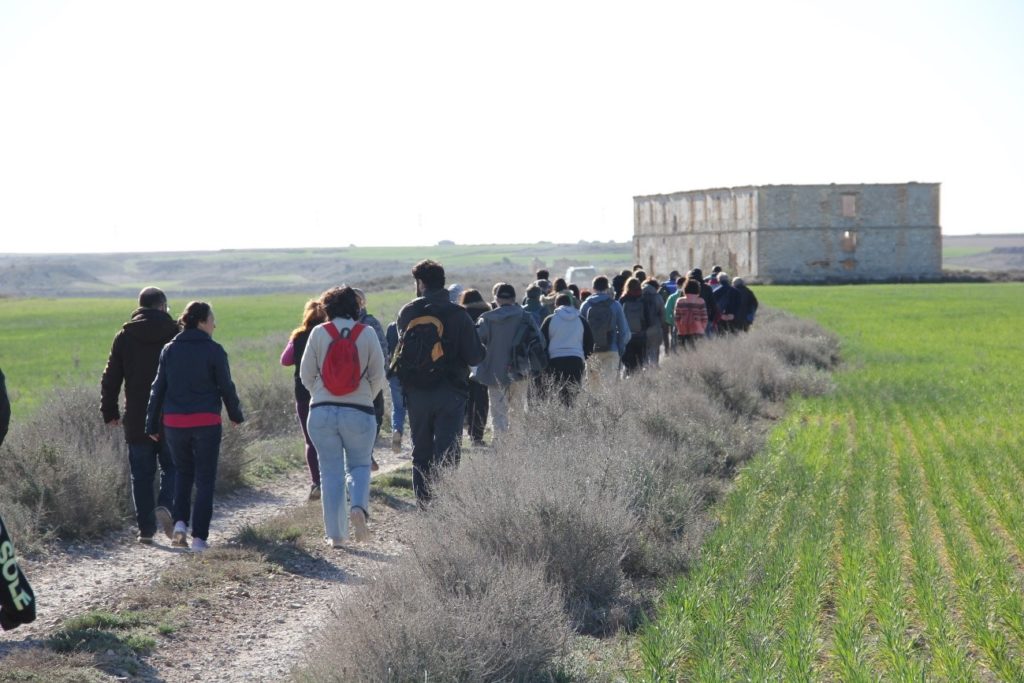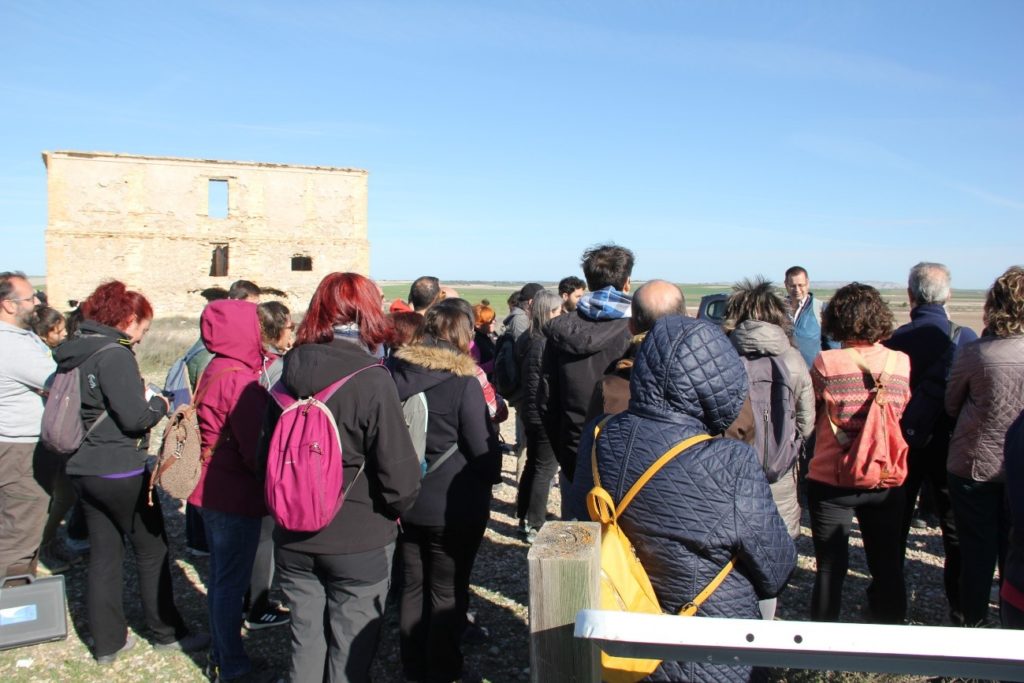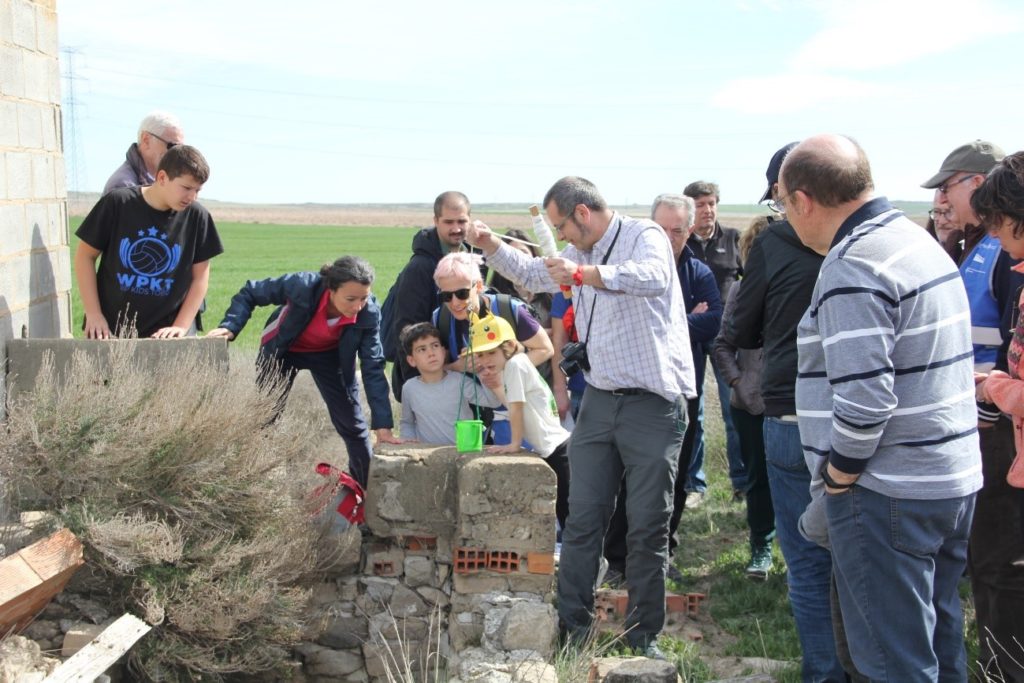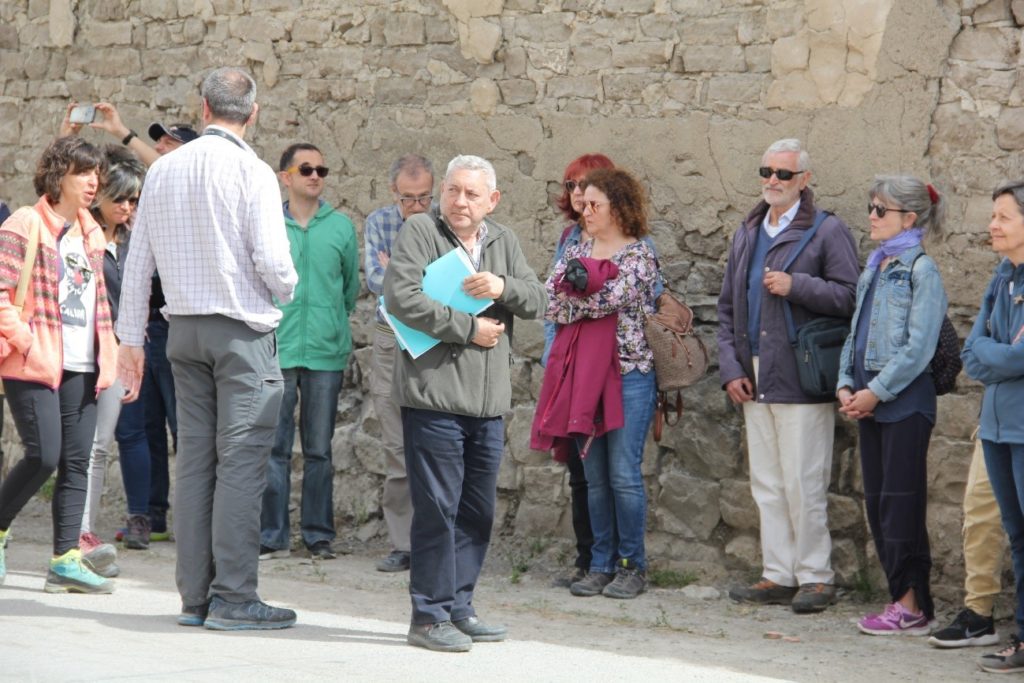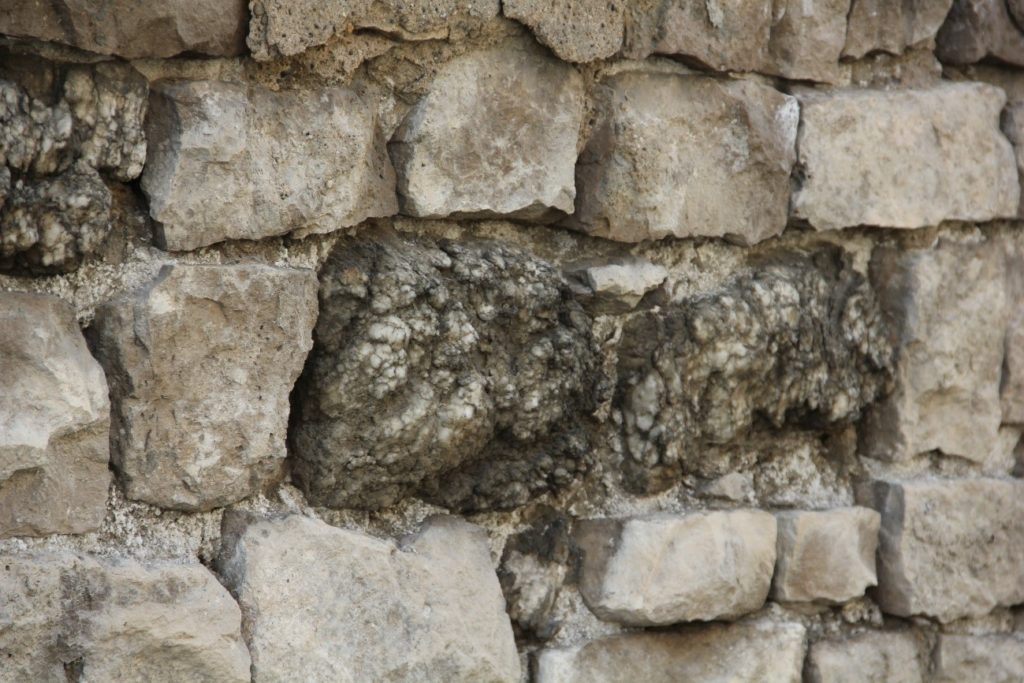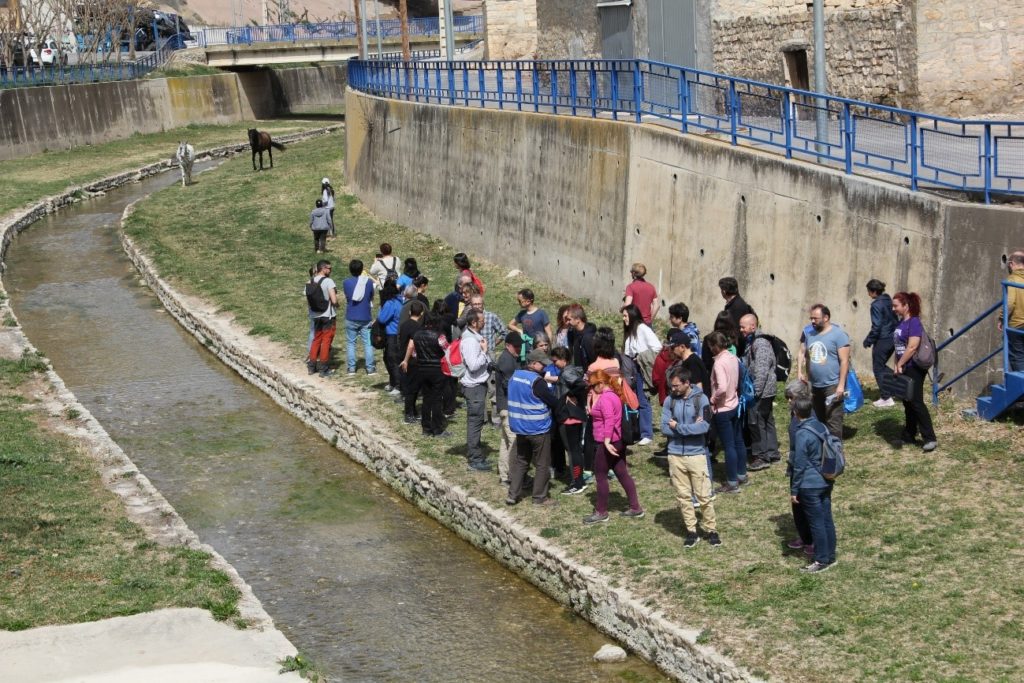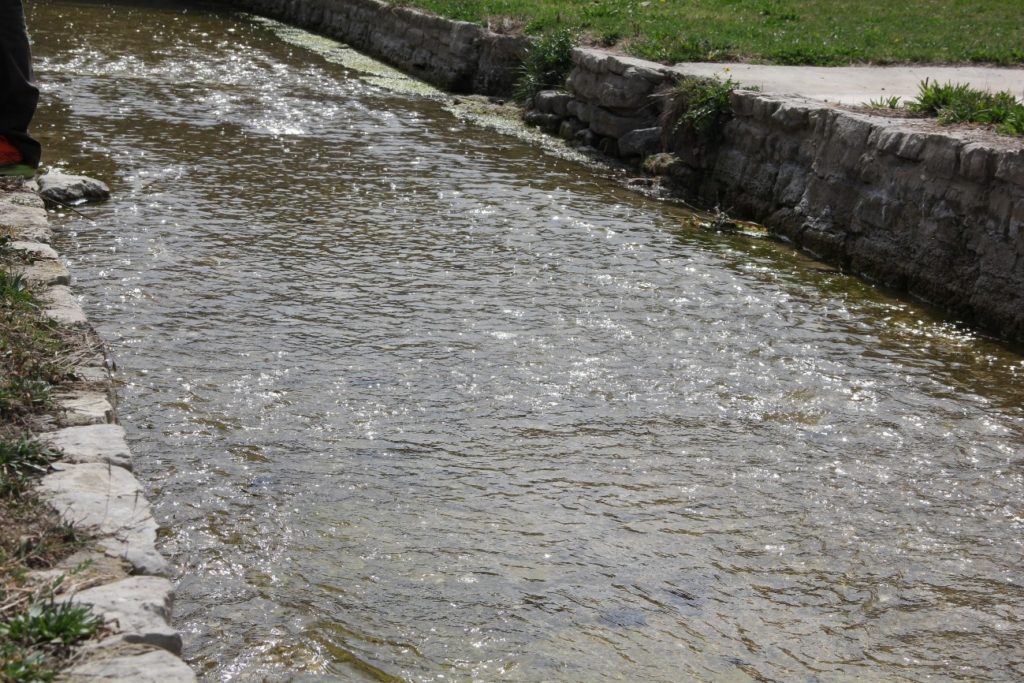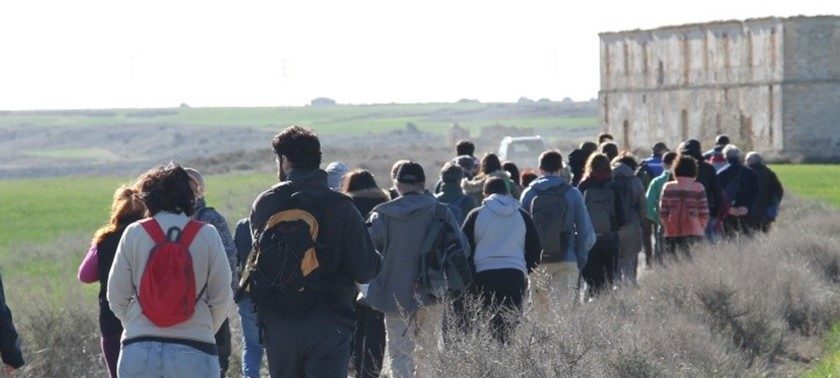On Saturday, March 25, the Hydrogeoday was celebrated: a day of dissemination of Hydrogeology which is celebrated every year on the occasion of World Water Day (March 22). The Zaragoza Field Day has been organized by IGME-CSIC in collaboration with the Aula Dei Experimental Station (EEAD-CSIC), the Ebro River Water Authority (Confederación Hidrográfica del Ebro, CHE), and the University of Zaragoza (UNIZAR).
This year the field trip took us to the “Saladas de Sástago-Bujaraloz”, a RAMSAR site with ephemeral lagoons (saladas) and protected habitats in the south of Monegros. The organizers of the conference were Eduardo Garrido, Cristina Pérez and Miguel Ángel Mazaruela, from IGME-CSIC , with the collaboration of Miguel Ángel García-Vera (CHE), José Ángel Sánchez (UNIZAR) and Carmen Castañeda (EEAD-CSIC). These persons disseminated the functioning of surface water and groundwater in relation these intermittent saline wetlands.
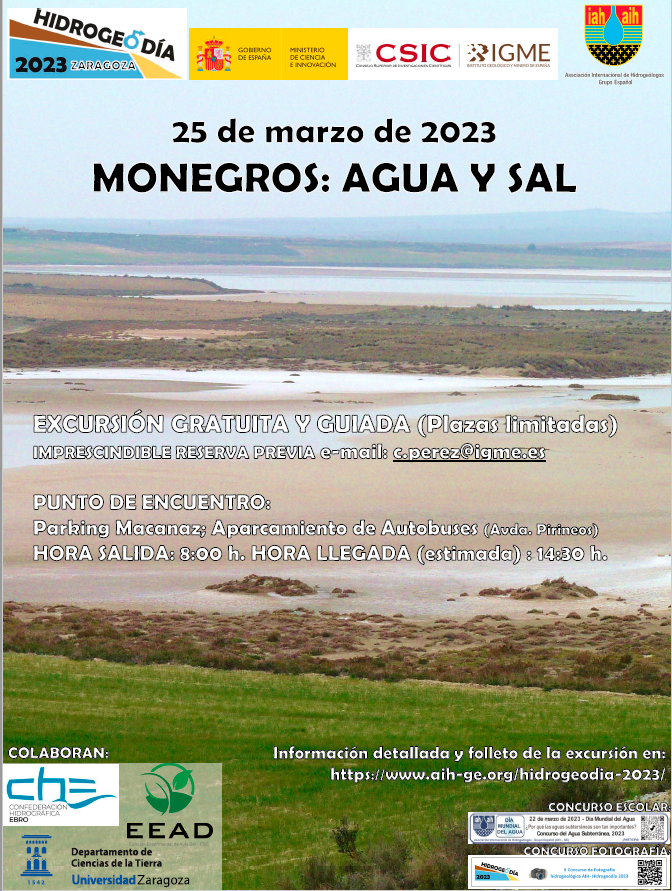
The tour guides presented in a simple way the creation of the endorheic basins , the different types of “saladas” and their relationship with the lithology, the cause of the intermittent presence of water, and the characteristics of the land and its waters. We did not forget to illustrate local history, the landscape transformations and its former exploitation as salterns. From La Playa, the bus took us to Pozo Agustín, a traditionally excavated well for sheep. There, it was easy to assess groundwater salinity and the presence of some nutrients such as nitrates and phosphates.
In the urban area of Bujaraloz, we quickly observed the deterioration of buildings such as the Virgen de las Nieves Hermitage. The stone walls showed the effect of the rise of saline groundwater (since it is very close to the ground surface), the dissolution of gypsum ashlars and the formation of saline efflorescences with the subsequent degradation of the walls. Finally, the bus took us to the Barranco de La Valcuerna, in Peñalba, a water course that collects the groundwater outlet of the area to take it to the Ebro river. In La Valcuerna we attended a practical demonstration of how to measure surface water flows, and how to identify the water flows from the irrigation returns and their characteristics. We measured a discharge of 63 liters per second…
The EEAD researcher, Carmen Castañeda, gave a brief introduction to the climatic aridity of the center of the Ebro valley, and about the agricultural use in the area and its transformation. On the ground, in the Laguna de La Playa, we identified the halophytes that tolerate salinity and colonize the bottoms to the extent that lagoon flooding allows. The high salinity of the waters has been verified in historic wells built in the old saltern exploitations, where some crustaceans that inhabit the hypersaline waters (about 146 dS/m of electrical conductivity) have been clearly observed.
The journey bus was filled in the first week! A success… and as proof of the activities of the day, some pictures are presented below.
